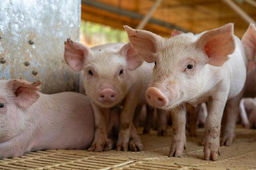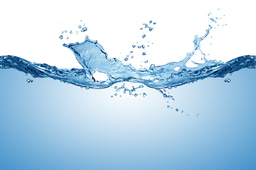Collection on Aquaculture Interstices: Where Biofloc Dynamics, Microbes, Nutrition and Health Converge
Published in Ecology & Evolution and Agricultural & Food Science

The field of aquaculture science and management is at a critical juncture, where advances in technology, biological discoveries, and environmental awareness are transforming the industry. As the global demand for sustainable and resilient food systems grows, the importance of aquaculture as a viable means of producing protein cannot be overstated. It is within this context that our Research Communities platform is pleased to announce a call for submissions to the 'Aquaculture Interstices: Where Biofloc Dynamics, Microbes, Nutrition and Health Converge' collection in new open access journal Aquaculture Science and Management. This compilation aims to bring together a diverse array of research endeavors that examine the complex relationships and synergies at the heart of modern aquaculture, with a focus on innovative management practices, novel nutritional strategies, and the intricate interplay between biofloc dynamics, microbial communities, and the health of aquaculture species.
Advances in Aquaculture Management: Enhancing Efficiency and Sustainability
One of the most significant areas of innovation in contemporary aquaculture is the development of more sophisticated and effective management practices. These include the use of advanced monitoring systems, which provide real-time data on water quality parameters such as dissolved oxygen levels, pH, and ammonia concentrations. This information can be used to inform decisions about feeding strategies, water exchanges, and other management practices, thereby reducing the risk of water quality deterioration and associated stress on the animals.
A key aspect of modern aquaculture management is the careful manipulation of stocking densities to optimize growth rates and minimize environmental impacts. By striking a balance between production goals and environmental sustainability, aquaculture operators can reduce the risk of disease outbreaks, improve water quality, and promote more efficient use of resources. Moreover, the implementation of integrated pest management (IPM) strategies and the use of vaccines can help to mitigate the risks associated with disease, further enhancing the overall health and resilience of farmed species.
Novel Antioxidant Sources for Enhancing Resilience
Aquaculture species, like all living organisms, are susceptible to oxidative stress caused by the accumulation of reactive oxygen species (ROS) in their tissues. This stress can be exacerbated by environmental factors such as water pollution, temperature fluctuations, and disease challenges, leading to compromised growth, increased morbidity, and mortality. The supplementation of diets with antioxidants has emerged as a strategic approach to enhance the resilience of aquaculture species to these environmental stressors.
Traditional antioxidant sources, such as vitamin C and E, have been widely used in aquaculture feeds. However, the search for novel, sustainable, and more effective antioxidant sources is an area of active research. Plant extracts, algae, and fungi, among others, have shown promising antioxidant properties and are being explored for their potential to improve the health and robustness of farmed fish and shellfish. These natural antioxidants not only offer a more sustainable alternative to synthetic additives but also contribute to the development of more holistic and integrated approaches to aquaculture health management.
The Biofloc Dynamics, Microbes, and Fatty Acid Profiles Nexus
The interplay between biofloc dynamics, microbial communities, and fatty acid profiles represents a fascinating and complex nexus within aquaculture systems. Bioflocs, which are aggregates of microorganisms, particulate organic matter, and detritus, play a critical role in the biogeochemical cycling of nutrients and the maintenance of water quality in aquaculture systems. The microbial communities within these bioflocs are not only responsible for the decomposition of organic wastes but also contribute to the provision of essential nutrients to the culture species.
Moreover, the fatty acid profiles of aquaculture species, which are influenced by dietary inputs and metabolic processes, can have significant implications for their health, growth, and nutritional value. The manipulation of biofloc dynamics and microbial communities through strategic management practices, such as the manipulation of carbon to nitrogen ratios (C:N) and the application of probiotics, offers a promising avenue for optimizing fatty acid profiles and enhancing the overall health and quality of farmed seafood.
Research Opportunities and Challenges
The convergence of biofloc dynamics, microbes, nutrition, and health in aquaculture presents a rich landscape of research opportunities and challenges. Key areas for investigation include:
- Mechanisms of Biofloc Formation and Stability: Elucidating the factors that influence biofloc formation, structure, and stability, and how these factors impact nutrient cycling and water quality.
- Microbial Community Dynamics: Exploring the composition, diversity, and functional roles of microbial communities in bioflocs and their interactions with culture species.
- Nutritional Strategies for Enhancing Resilience: Developing novel dietary approaches that leverage antioxidants, probiotics, and other nutritional interventions to improve the health and robustness of aquaculture species.
- Integrated Management Practices: Designing and testing integrated management practices that can optimize biofloc dynamics, microbial communities, and nutritional inputs to enhance the overall health, growth, and quality of farmed species.
- Sustainable Aquaculture Systems: Developing and evaluating sustainable aquaculture systems that incorporate insights from biofloc research, aiming for more environmentally friendly, socially responsible, and economically viable farming practices.
Epilogue
The 'Aquaculture Interstices: Where Biofloc Dynamics, Microbes, Nutrition and Health Converge' collection seeks to capture the essence of this exciting and rapidly evolving field, showcasing research that embodies the interdisciplinary spirit of modern aquaculture science and management. By converging on the critical interfaces between biofloc dynamics, microbial communities, nutrition, and health, we aim to illuminate new pathways for improving the sustainability, efficiency, and environmental stewardship of aquaculture practices. We invite researchers, academics, and industry professionals to contribute their insights, findings, and perspectives to this collection, fostering a global dialogue that advances our understanding and management of these complex systems. Together, we can forge a future for aquaculture that is characterized by resilience, innovation, and a deep commitment to the well-being of both people and the planet.
The collection accepts original research, reviews, methodologies and commentaries. As a new open access journal, Aquaculture Science and Management is able to cover the article processing charges for publications.
About the Guest Editors:
Dr. Dharmendra Kumar Meena, PhD, Central Inland Fisheries Research Institute, India
D. K. Meena is a senior scientist working at ICAR-Central Inland Fisheries Research Institute, Kolkata, India. Dr. Meena has in his credit more than 60 international, 10 national peer reviewed articles, 30 book chapters, more than 50 popular articles. In addition, he is member of Editorial board of Research Biotica, Review Editor of Frontiers in Aquatic Physiology, sectional Editor, and World Journal of Food Science and Technology, Editorial Board member, Biotica Research Today (BRT), Editorial Board member Biotica journal, Editorial Board Member of Agriculture and Food Newsletter.
Professor Lee Seong Wei, PhD, Universiti Malaysia Kelantan, Malaysia
Lee Seong Wei's passion lies in teaching and research. His teaching courses are aquaculture, aquaculture production management and special topic in animal husbandry for first degree and postgraduate studies. His research mainly focusses on aquatic animal nutrition, aquatic animal health management, aquatic animal breeding and production. His current research focuses on sustainable aquaculture in terms of aquatic animal nutrition and disease management by using phytobiotic, probiotic, and prebiotic or their combination as feed additive in aquatic animal production.
Follow the Topic
-
Aquaculture Science and Management

This is an open access peer-reviewed journal that aims to publish innovative research about the management of aquaculture species, the related food security considerations, and the industry’s relationship with the environment.






Please sign in or register for FREE
If you are a registered user on Research Communities by Springer Nature, please sign in